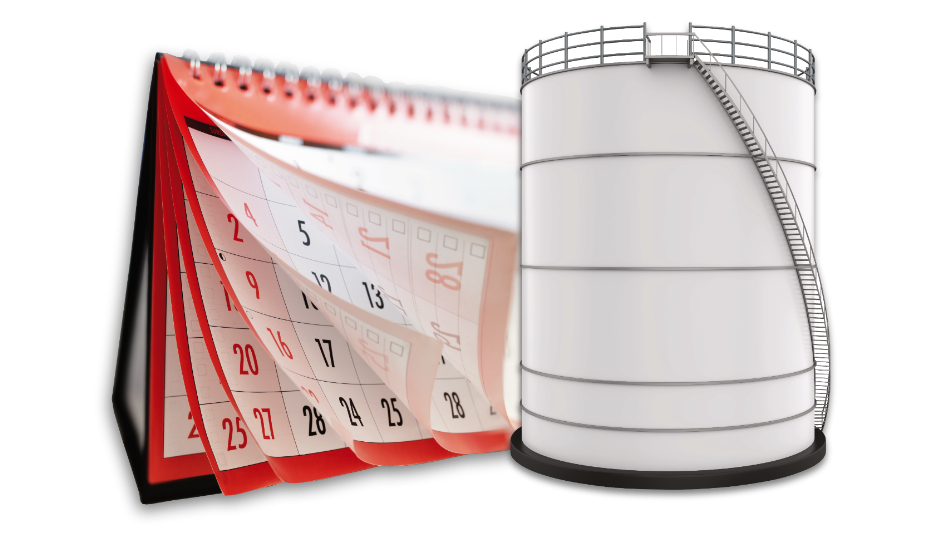All
Delivering ALL Your Gallons with Fewer Trucks, ALL Year Round!
by Phil Baratz, Angus Energy

Your customers aren’t average. Their delivery schedule shouldn’t be, either
The largest expenses for heating oil and propane distributors are those related to deliveries. Fixed fleet costs including trucks, insurance and maintenance, as well as the variable costs of wages and fuel during the heating season, always seem to be on the rise.
The trick ... deliver all your gallons with fewer trucks, stops, driver hours and fuel costs during all four seasons.
The first step in having fewer trucks on the road is to understand why you have so many in the first place. The simple reason is that we plan our deliveries based on tools that are decades old: they were GREAT then, but so was the payphone, and we need to adjust our delivery planning using new tools that focus on optimizing delivery costs.
We are ingrained with the notion of averages: the average customer consumes 900 gallons per year, the average customer has 1.7 service calls annually, the average customer has a K-factor of 5.4, and so on. However, none of your customers are average. Averages enable us to make decisions more easily but not more effectively. For example, Ks might average 5.4 but 30% of deliveries are to customers with Ks under 4.0 and 30% to customers with Ks over 8.0. Yet, the impulse is to say things like, “let’s deliver 175 gallons to all our 275-gallon tanks” whether those customers consume 15 gallons a day in January or 3 gallons a day. If you delivered based on your customers’ usage instead of their tank level, you would be certain there was enough oil in the tank to avoid a runout, and your deliveries could be far more efficient.
While all 275-gallon tanks might have the same number of gallons immediately after they are filled, that is probably the only time all 275-gallon tanks are the same. Burning fuel down to the next delivery date happens at a different pace – based on baseload and K-factor, but we already know that. What is of greater interest is WHY a delivery is targeted to be a certain size or at a certain reserve level? The reason generally comes back to two things: Averages and January. If your average tank burns between seven and eight gallons a day in January – due to the average K-factor of 5.4 and the average of (for example) 38 HDDs – and you want to have 10 days of “elbow room” before runout, then a 75-gallon reserve makes perfect sense. However, while you do have Ks of 5.4 and it is January for one-twelfth of the year, what about the Ks of 4 that might need a larger reserve or the Ks of 10 that need a smaller reserve? In addition, what about that same 5.4 with the 75-gallon reserve – does that tank need a 75-gallon reserve in March when it burns 4 gallons a day? The main point here is that we underutilize our data. When you have 4 different tank sizes and 10,000 customers, why have only 4 reserve levels when you can – and should – have 10,000 reserve levels? It’s just math! And it is not complicated math.
In many cases, simply “right-sizing” deliveries to the time of year and the customers’ Ks would be enough, as right-sized deliveries have been proven to increase delivery sizes by about 20%. However, in addition to lowering the number of trucks simply by making larger deliveries, there are programmable ways to shift deliveries and further reduce the number of trucks needed. If you shift deliveries so there are fewer trucks needed in January, you won’t have to pay for those trucks all year round. Using the same math that determines daily consumption for each month of the year, for each tank, you can algorithmically shift deliveries out of January without risking runouts. That lowers the demand for January deliveries, lowering the costs of your fleet, your staffing, and – important to many – taking a big bite out of overtime costs.
Thankfully, our industry now has tools that combine data, processing, and a little AI (Artificial Intelligence), allowing you to consider your many options and make informed decisions which could reduce the number of trucks and routes you need for your deliveries.
Phil Baratz is founder and CEO of Angus Energy, a developer of business intelligence tools for the energy industry. He can be reached at pbaratz@angusenergy.com or 954-564-7500.
Related Posts
 U.S. Competing to Secure Critical Minerals
U.S. Competing to Secure Critical Minerals
Posted on June 16, 2025
 The Clean Air Act, the EPA, and State Regulations
The Clean Air Act, the EPA, and State Regulations
Posted on May 14, 2025
 Day Tanks Support Back-up Generators in Extreme Conditions
Day Tanks Support Back-up Generators in Extreme Conditions
Posted on March 10, 2025
 Major Breakthrough in Lithium-Ion Batteries
Major Breakthrough in Lithium-Ion Batteries
Posted on February 12, 2025
Enter your email to receive important news and article updates.
